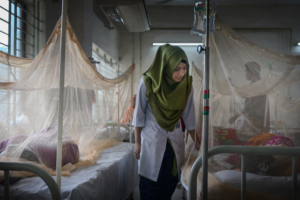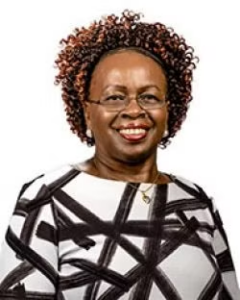Dr. David Fajgenbaum and his team at Every Cure are leveraging artificial intelligence to find new uses for existing medications, offering hope to patients with rare diseases who have exhausted conventional treatment options.

Dr. David Fajgenbaum knows what it’s like to face death with no treatment options left. At 25, while in medical school, he was diagnosed with Castleman disease, a rare disorder that caused his immune system to attack his organs. After nearly dying five times and receiving last rites, Fajgenbaum took his fate into his own hands.
Through meticulous research of his own medical data and existing literature, Fajgenbaum discovered that sirolimus, a drug typically used to prevent rejection in kidney transplant patients, could potentially treat his condition. The gamble paid off—he has now been in remission for over a decade.
This personal victory sparked a larger mission. Fajgenbaum established two nonprofits: the Castleman Disease Collaborative Network (CDCN), which pioneered a new approach to rare disease research, and more recently, Every Cure, which uses artificial intelligence to identify potential new uses for existing medications.
“There is a treasure trove of medicine that could be used for so many other diseases. We just didn’t have a systematic way of looking at it,” said Donald C. Lo in an interview with the NY Times. Dr. Lo is a scientific lead at Remedi4All, a group focused on drug repurposing.

Every Cure’s AI platform compares approximately 4,000 drugs against 18,500 diseases, assigning scores based on efficacy likelihood. This approach has already yielded remarkable results.
One success story involves Joseph Coates, a 37-year-old man with POEMS syndrome who was days away from hospice care. After Fajgenbaum’s team suggested an unconventional combination of medications, Coates responded to treatment within a week and is now in remission.
The work is especially important for rare diseases, which affect fewer than 200,000 people in the United States individually but collectively impact tens of millions of Americans. More than 90 percent of these conditions have no approved treatments, and pharmaceutical companies have little financial incentive to develop new drugs for small patient populations.
While AI-driven drug discovery for new medications can be highly profitable, finding new uses for existing generic drugs offers limited financial return. To fund their nonprofit work, Every Cure received over $100 million in commitments last year from TED’s Audacious Project and the Advanced Research Projects Agency for Health.

“This is one example of AI that we don’t have to fear, that we can be really excited about,” said Dr. Grant Mitchell in an interview with the NY Times. Dr. Mitchell is a co-founder of Every Cure. “This one’s going to help a lot of people.”
Dr. Fajgenbaum’s approach to hope is action-oriented. “Hope cannot be a passive concept. It’s a choice and a force,” he wrote in his 2019 memoir, “Chasing My Cure.” This philosophy drives his tireless work to help others facing dire medical situations.
“I love the kind of hope where I want something so badly that it inspires me to act,” he said in an interview with AAMCNews. “Then that action gives me more hope, because I see that I tried something and, oh my gosh, amazingly, it worked, which then drives me to try another action.”
Read the article by Kate Morgan in The New York Times: Doctors Told Him He Was Going to Die. Then A.I. Saved His Life.
Read the article by Stacy Weiner in AAMC News: This doctor saved his own life. Now he’s on a mission to save thousands more
Watch this video about Dr. Fajgenbaum and his work:
Related Articles

Celebrating World NTD Day 2025: Honoring Medical Humanitarians and the Fight Against Neglected Tropical Diseases
On World NTD Day 2025, we celebrate the medical humanitarians fighting to eliminate Neglected Tropical Diseases. Their efforts bring hope to millions, offering treatment, prevention, and a path toward a healthier future. Together, we can unite, act, and eliminate NTDs for good.

African Scientist Champions New Era of Equitable Medical Research
Dr. Monique Wasunna, a pioneering African medical researcher, has transformed neglected disease treatment through DNDi, championing locally-led research while fighting against colonial-era medical research legacies.

The Team Hunting for Chagas Disease in the U.S.
Follow Dr. Norm Beatty and his team at the University of South Florida as they track down the “kissing bug” that transmits Chagas disease, an often silent neglected tropical disease now found in the U.S.
